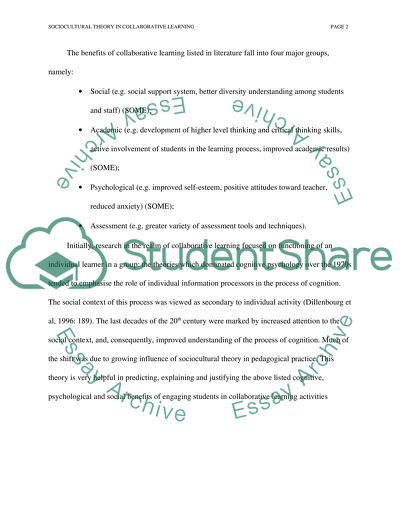Cite this document
(“Sociocultural Theory Essay Example | Topics and Well Written Essays - 2500 words”, n.d.)
Sociocultural Theory Essay Example | Topics and Well Written Essays - 2500 words. Retrieved from https://studentshare.org/education/1504644-sociocultural-theory
Sociocultural Theory Essay Example | Topics and Well Written Essays - 2500 words. Retrieved from https://studentshare.org/education/1504644-sociocultural-theory
(Sociocultural Theory Essay Example | Topics and Well Written Essays - 2500 Words)
Sociocultural Theory Essay Example | Topics and Well Written Essays - 2500 Words. https://studentshare.org/education/1504644-sociocultural-theory.
Sociocultural Theory Essay Example | Topics and Well Written Essays - 2500 Words. https://studentshare.org/education/1504644-sociocultural-theory.
“Sociocultural Theory Essay Example | Topics and Well Written Essays - 2500 Words”, n.d. https://studentshare.org/education/1504644-sociocultural-theory.


